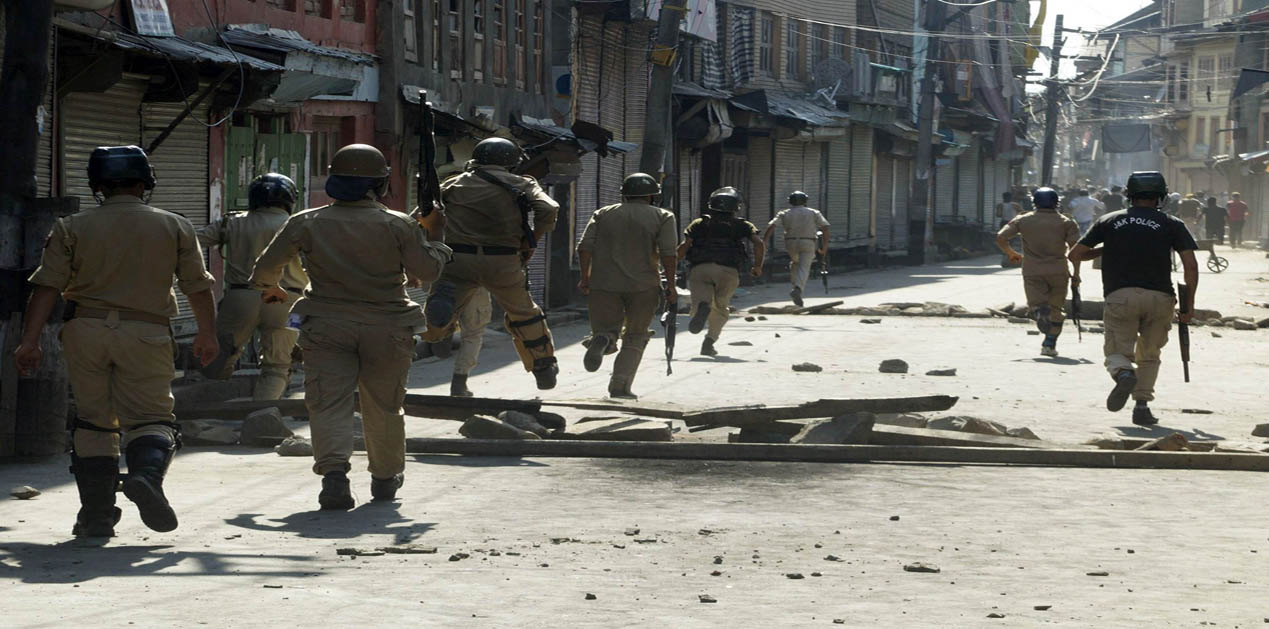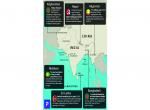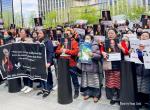“Peace is not absence of conflict; it is the ability to handle conflict by peaceful means” - Ronald Reagan.
Viewpoint Kashmir
Robert Greene says: never take it for granted that your past successes will continue into the future. Past successes are biggest obstacles because every conflict every battle is different and one cannot assume that what worked in the past will work in future too. Conflict in Kashmir is a casualty of the dogma of status quo mindset on the part of political leadership and law enforcing agencies. There is a need to understand that it is a different conflict that has shades of hybrid, asymmetric, intifada (inner uprising) and proxy war. This conflict of the battle of perception, political polarisation, religious fundamentalism and survival in an uncertain environment cannot be resolved through a keyhole viewpoint. It is a tired ideology to see Kashmir conflict through the prism of a security problem.
Ground situation is heading for a bloody confrontation between government and the people, terrorists and the security forces and radicals and the moderates. What is not visible is that Kashmiri society itself is at crossroad and there is a fog whether this fight is for self-determination or this fight is for Islamic state of Kashmir. It will be a miscalculation to assume that target of hybrid war in Kashmir is restricted to geographical confines of Jammu & Kashmir (J&K). Pakistan wants to exploit Kashmir as a pivot to trigger instability in other parts of India.
Weak Government Institutions Give Impetus to Instability
Old regime attitude is a poor and regressive outlook to a conflict that has all the potential to escalate to a point of no return. The biggest problem with old regime syndrome is that ideas have become cemented over a period of time and policy makers refuse to take a de-novo look at the future trajectory and conflict management strategies in a changing time. Such a strategy has neither done good for India nor for the people of Kashmir. There is a missing link and that is a long-term campaign strategy. Dealing with such conflict with the mindset of “peace for my time” is an indeed absence of a strategy. Today, the situation in Kashmir is so volatile that more than the terrorists it is the ‘planners, movers, and agitators’ that pose a greater threat to the stability and peace in Kashmir. It is this category that has held Kashmir to ransom and they are yet not being dealt either by law or by the long arms of the state. There is no penalty and deterrence that government has put in place against them. As part of the planning process in such protracted conflict, analysis of perception and social behaviour is must to identify the planners, movers and agitators. It is a potent conflict management tool and assumes significance to adopt such techniques to work out the counter strategy against planners and movers of instability and uprising. Agitators can be handled by security forces with firm hand once other categories are neutralised by the state machinery.
Public disorder and crowd-sourcing of terrorism is not inviting any penalty; as a result, the radicals are multiplying and spreading their sphere of influence. Jamaat-e-Islami is going about its job of radicalisation of people without interruption. The worrying factor is that they are targeting now the areas South of Pir Panjal that is comparatively peaceful. The agitation has not spread South of Pir Panjal primarily due to the strong presence of Sufi Islam. The unifying factor is the presence of large Sufi shrines including revered shrine of Baba Gulam Shah Badshah (Shahadra Sharif). Agenda of Jamaat is certainly not peace but radicalisation of people to ultimately achieve the objective of Nizam-e- Mustafa (Sharia Law) in Kashmir. Lack of will and inability to curb Jamaat funding and pan India activities is giving impetus to radicalisation. System colluding with offenders of money laundry is not facing any penalty in Kashmir because system has become slave to the dictate of separatists.
In spite of the hard work done by the security forces and police in J&K to arrest many Pakistani dreaded terrorists but not even one case has been logically concluded and punished for waging war against the state. In such an environment police and other government institutions have assumed that culprits will go scot free and their families will face retribution from terrorists and their sympathisers for doing service to the nation. The accountability is not only of police but that of other organs of the state as well. There is no reason why Pakistani terrorists (some of them already released) should not be awarded the sanctified death penalty for war crimes. The government needs to put pressure on the judiciary to conduct a speedy trial to send a strong message.
“Good Ideas” form the Bases of Conflict Resolution
Monitoring rural public opinion in such a critical people-centric conflict is extremely important because historically from People’s War of Mao to liberation of Bangladesh the movements were catapulted to new levels by the rural populace. The sudden turn of events that has taken place in Kashmir in 2016 is primarily due to the fact that this time instability is triggered from rural areas with the support of the woman. This is one of the primary responsibilities of the intelligence agencies and they probably went completely off the mark because they focused on the events happening in towns and cities and neglected rural areas. It requires a tremendous amount of vision and intellectual orientation to innovate and research the footprints, flash points and future trajectories of conflict.
It is an established fact that terrorists and instigators are part of people, they survive and operate with the knowledge and support of the people. Therefore, the information of their activities is with the people and they can be eliminated and marginalised by developing own covert assets within the people. This is the only way to break the cohesion among the proxies and their support. They must feel threatened and vulnerable among the people. It is easy to suggest but it would take a long time to build such capabilities and there is no alternative to such initiative. Most trusted by them should be the first to be developed as deep assets. Pakistan has used people to pursue their strategy, as a consequence Inter-Services Intelligence (ISI) and its proxies in Kashmir are using crowdsourcing of terrorism as a powerful tool to attack the institutions of governance. This threat can only be reversed by using the same weapon to break this strategy and employ crowdsourcing as a powerful tool for counter-terrorism.
Managing One Conflict Wisely Will Prevent Many in Future
How should the conflict be managed in Kashmir? The politicians though have low credibility of conflict resolution due to lack of credibility but politics is a tool of conflict resolution. Thus it is necessary to get the political acceptance and authority on the process of conflict management. Managing a complex conflict such as Kashmir requires a very careful identification of dealing with diverse pressure groups and stakeholders. Yet the message should not go across that government institutions are weak and thus would accept the unreasonable demand of separatists and disaffected population. Preparing strategy needs deliberate discussion, creative ideas and ground inputs from all stakeholders.
Conflicts are not always resolved by agreements/ accords or brokered by the government; conflict resolution is a process that requires multi-dimensional approach. Engagement with the youth, women and other stakeholders to the conflict are an important activity to prepare grounds for resolution because if there is no communication then there is no understanding. In Kashmir “alternative conflict resolution” initiatives by people’s forum are absent. Such initiatives should not be seen as tutored by the government and should be undertaken by the people of great integrity and professional acumen who have the in-depth knowledge of the conflict and can prepare the ground for the way forward. Peace in Kashmir valley can only be restored if people want it or when the capacity to maintain peace is built. No security force can build capacity for peace; it has to come from within the society. Apart from the above, there is a need for the state and central government to carefully look at following issues that would go a long way in dealing with non-military threats to the peace and stability of Kashmir.
There is a large constituency in Kashmir that does not support the spread of Wahabism and idea of Nizam-e-Mustafa. Due to lack of institutional support, they perforce are subdued and unable to resist the spread of radicalisation. In view of the foregoing, proxies of Pakistan and radicals within Kashmir can be dealt by state institutions with the participation of the people. The strategy of using people against people is part of just means to fight a just war.
Centre and the state government should ensure that erosion of moral and subversion of police will be catastrophic and it should be prevented by incentive, due recognition of their contribution to maintaining law and order in a hostile environment, training and modernisation. Terrorists have served threats to the police personnel because ISI is aware that to succeed in their objective in Kashmir, erosion of J&K Police (JKP) is imperative because they have the intelligence network, they are aware of the cadres, sympathisers and modus of activities of over ground workers. Thus more than the other central forces it is the state police that should be empowered to stay on its course during this troubled time. There is a need to compensate those who are risking their lives on daily basis. Current allowances are grossly inadequate considering the degree of difficulty they face in discharging of their duties. The state police engaged in Counter Insurgency – Counter Terrorism (CI-CT) operations should be given same incentives as being given to the Central Armed Police Forces (CAPF). Instead of increasing the number of CAPF units in the valley, it is more pertinent to raise additional armed battalions of JKP and special operation groups along with Mahila Police to deal with the unrest. There would be few desertion and cases of loss of some weapons but more important is that it is the local boys that would be in a better position to handle the unrest caused by agitators.
It is high time that intelligence agencies develop their own ‘Special Activities Division’ (SAD) consisting of members of ethnically same people from the area of conflict that can melt and merge with the masses. SAD further could have operations and inbuilt support groups. There is an inner resentment among more aware educated youths that consider the agenda of converting Kashmir into an Islamic state or Nizam-e-Mustafa is regressive and an attempt to destroy the cultural heritage of Kashmiriyat. Such motivated youths should be identified and trained to form part of SAD/ special operations units. However, they must be trained to operate in complete incognito without any local connection with the security setup.
Maintaining Peace is a Serious Business and Not an Event Management
More often Delhi wakes up only when there are crisis and situation becomes critical. The knee jerk reactions are a bad idea to pursue. Conflict in Kashmir is not an event management; it needs consistency, continuity and evolving campaign strategy. The strategy must remain dynamic to maintain unpredictability in operations to avoid fatigue factor that sets in due to external pressures and organisational constraints. Security forces are operating under different ministries with different objectives. Whereas the operations, intelligence and non-military measures should be applied in a synergised manner. Time has come for the government to cast away the policy of appeasement and adopt a strategy of containment. This strategy should be omnidirectional because the threat is not uni-directional.
There is a need to have professionals, social scientists and academia that should form part of a task force that should monitor and plan actions before the events overtake the state response mechanism. Former Army Commander Northern Command Gen DS Hooda is one such capable person who should head this task force since he understands the mindset of planners, movers and agitators on both sides of the Line of Control and terror organisations. He is also respected by the people of the valley for his understanding of conflict in Kashmir. More important the task force should be deliberating the principles of conflict management can be applied to Kashmir to stabilise and reverse current instability. Following principles of conflict management can be applied to Kashmir in a creative manner:-
Avoiding the Conflict - In the context of Kashmir avoidance of conflict does not mean curtains for CI/CT operations but political parties and fringe elements could avoid flagging issues that can put Valley on the edge. Issues that could raise the tempers and add fuel to fire or destabilise already fragile public order. Any attempt to cause an imbalance in sentiments needs to be avoided.
Standing your Ground - The government must not compromise on issues of CI/CT operations and crackdown on stone pelters and anti-national activities. However, the establishment should not be inconsiderate to respecting human rights, religious and cultural sentiments.
Collaborating - There are no untouchable when it comes to negotiations. Collaboration by all political parties to first stabilise the situation is a must. No one will benefit from this uncertain environment. Thus most insignificant and inconsequential stakeholders also need to be taken on board. Collaboration does not mean accepting what separatists demand but being innovative, creative and taking the viewpoints of the parties to the conflict. Even listening to the grievances is part collaborating.
Giving In - It does not mean bending to unreasonable demands, rather it is accommodating the viewpoints and genuine and legitimate demands. Development and local governance is a major issue in rural Kashmir. It cannot be wished away this should be addressed. Viewpoints of people’s forum should be respected.
Compromising - Compromise can only be made when both parties are prepared to sit down and accept conditions for stabilisation of situation. It is a two-way process and not unilateral in nature.
“Raise Your Thoughts” Not Your Fists
“Raise your thoughts, not your fists”, is the message that needs to be sent to the disaffected population of Kashmir especially youths. There may be a difference in perception, arguments from perspectives of belief, faith and religion, but it should not get converted into hate. Conflict resolution is not always end of violence but the end of hate and perceptional difference. We often blame the revolting population and ultra-radicals for being an impediment in conflict resolution. But the problem is not their hardened stand, problem is that each one of them sees the conflict differently. Conflict is an arena and Kashmir is no different where things are seen through a different prism. The idea of engagement with diverse tools is to bring together all stakeholders to at least start seeing the problem with the same lens. Thus military operations assume same significance as the engagement between people to people and community to community. But the bottom-line is that all actions must be as per campaign strategy and with the multi-dimensional approach. They all are complementary to each other. It is important to acknowledge that “When you’re at the edge of a cliff, sometimes progress is a step backwards” (Anonymous).
(Brig Narender Kumar, SM, VSM, is a Senior Fellow at the Centre for Land Warfare Studies)
Image Source: http://www.kashmirlife.net











Post new comment